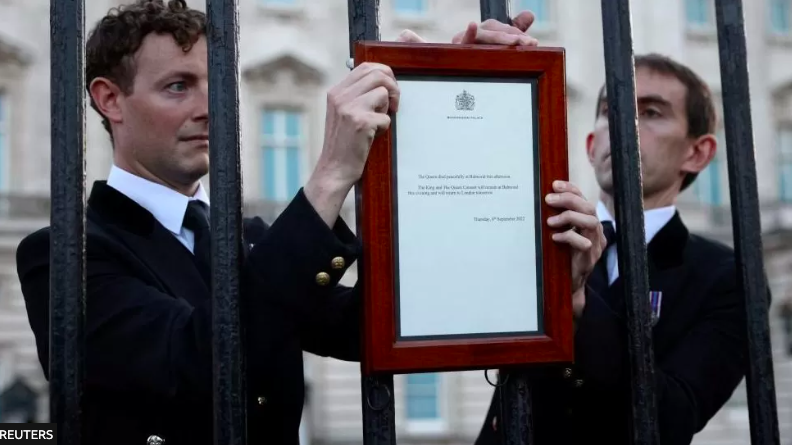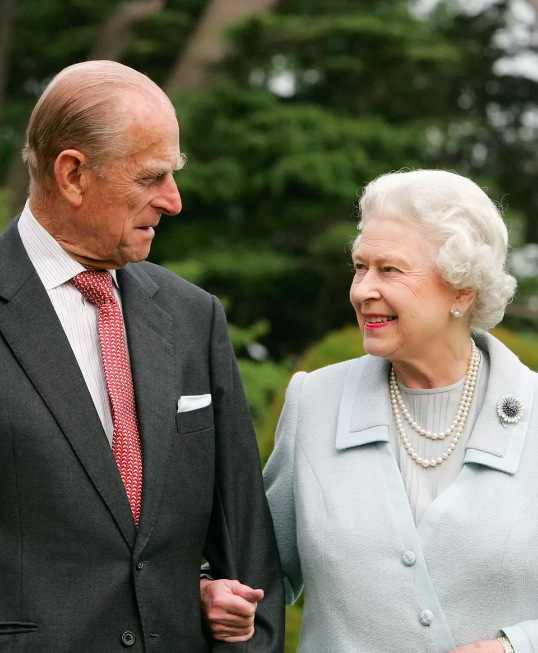
Queen Elizabeth II, the UK’s longest-serving queen, has passed away at Balmoral, after reigning for 70 years. She was 96-years-old. The Queen’s family gathered at her Scottish estate once concerns grew about her health earlier on Thursday. Queen Elizabeth took on the throne in 1952.
With her death, her eldest son Charles, Prince of Wales, will now lead the country in mourning as the new King and head of state for 14 Commonwealth realms. His wife, Camilla, will become Queen Consort.
In a statement, His Majesty The King said, “The death of my beloved mother Her Majesty The Queen, is a moment of the greatest sadness for me and all members of my family.
We mourn profoundly the passing of a cherished sovereign and a much-loved mother.
“I know her loss will be deeply felt throughout the country, the realms and the Commonwealth, and by countless people around the world.”
During the coming period, he announced he and his family would be “comforted and sustained by our knowledge of the respect and deep affection in which the Queen was so widely held.”
Buckingham Palace said in a statement, “The Queen died peacefully at Balmoral this afternoon.
The King and the Queen Consort will remain at Balmoral this evening and will return to London tomorrow.”
All the Queen’s children arrived in Balmoral after doctors placed the Queen under medical supervision.
Prime Minister Liz Truss, who the Queen appointed on Tuesday, said the monarch was the rock on which modern Britain was built, had “provided us with the stability and strength that we needed.”
In reference to the new King, she said, “We offer him our loyalty and devotion, just as his mother devoted so much, to so many, for so long.
“And with the passing of the second Elizabethan age, we usher in a new era in the magnificent history of our great country, exactly as Her Majesty would have wished, by saying the words ‘God save the King’.”
Queen Elizabeth II’s reign spanned post war austerity, the transition from empire to Commonwealth, the end of the Cold War, and the UK’s entry into – and withdrawal from – the European Union. The Queen’s reign spanned 15 prime ministers beginning with Winston Churchill, born in 1874, all the way to Ms. Truss, born 101 years later in 1975.
At Buckingham Palace in London, crowds were awaiting for news regarding the Queen’s condition and began crying as they heard of her passing. The Union flag on top of the palace was lowered to half-mast at 18:30 BST and an official notice announcing the death was posted outside.

The Queen was born Elizabeth Alexandra Mary Windsor, in Mayfair, London on April 21, 1926.
She wasn’t expected to become monarch, but in December 1936, her uncle Edward VIII resigned from the throne to marry the American Wallis Simpson. Elizabeth’s father then became King George VI and, at age 10, Elizabeth (known then as Lilibet to her family) became heir to the throne. Within three years time, Britain was at war with Nazi Germany. Elizabeth and her younger sister, Princess Margaret, spent much wartime at Windsor Castle. Once she turned 18, Elizabeth spent five months with the Auxiliary Territorial Service and learned basic motor mechanic and driving skills. “I began to understand the esprit de corps that flourishes in the face of adversity,” she said later.
Throughout the war, she exchanged letters with her third cousin, Philip, Prince of Greece, who was serving in the Royal Navy. Their romance bloomed and the pair married at Westminster Abbey on November 20, 1947, with the prince taking the title of Duke of Edinburgh.
She later described him as “my strength and stay” through 74 years of marriage, before his death in 2021, at age 99.

Charles, their eldest son, was born in 1948, followed by Princess Anne, in 1950, Prince Andrew, in 1960, and Prince Edward, in 1964. Among them, they had eight grandchildren and 12 great-grandchildren.
Princess Elizabeth was in Kenya in 1952 when she learned that her father had died. She immediately returned to London as the new Queen.
“It was all a very sudden kind of taking on and making the best job you can,” she later said.
Elizabeth was crowned at Westminster Abbey on June 2, 1953, at age 27, in front of a then-record TV audience estimated over 20 million people. Decades would see great change throughout her reign, with the end of the British Empire overseas and the swinging ’60s sweeping away social norms at home. Queen Elizabeth reformed the monarchy for this less deferential age, engaging with the public through walkabouts, royal visits, and attending public events. She was committed to the Commonwealth – she visited every Commonwealth country at least once.
Of course there were moments of private and public pain. In 1992, the Queen’s “annus horribilis”, fire devastated Windsor Castle – a private residence as well as working palace – and three of her children’s marriages broke. The Queen drew criticism for appearing reluctant to respond publicly after the death of Princess Diana, who passed in a car accident in Paris in 1997.
There were questions about the monarchy’s relevance in modern society.
“No institution… should expect to be free from the scrutiny of those who give it their loyalty and support, not to mention those who don’t,” she said.
As a princess, Elizabeth vowed to devote her life to service. Reflecting on those words decades later, during her Silver Jubilee in 1977, she stated, “Although that vow was made in my salad days, when I was green in judgment, I do not regret nor retract one word of it.”
The same commitment to serving was over four decades later in a thank you letter to the nation on the weekend of her Platinum Jubilee in June. The milestone was celebrated with a mix of state ceremonies and a colorful festival of all things British, as well as lively street parties.
Although the Queen’s health kept her from many events, she said, “My heart has been with you all.”